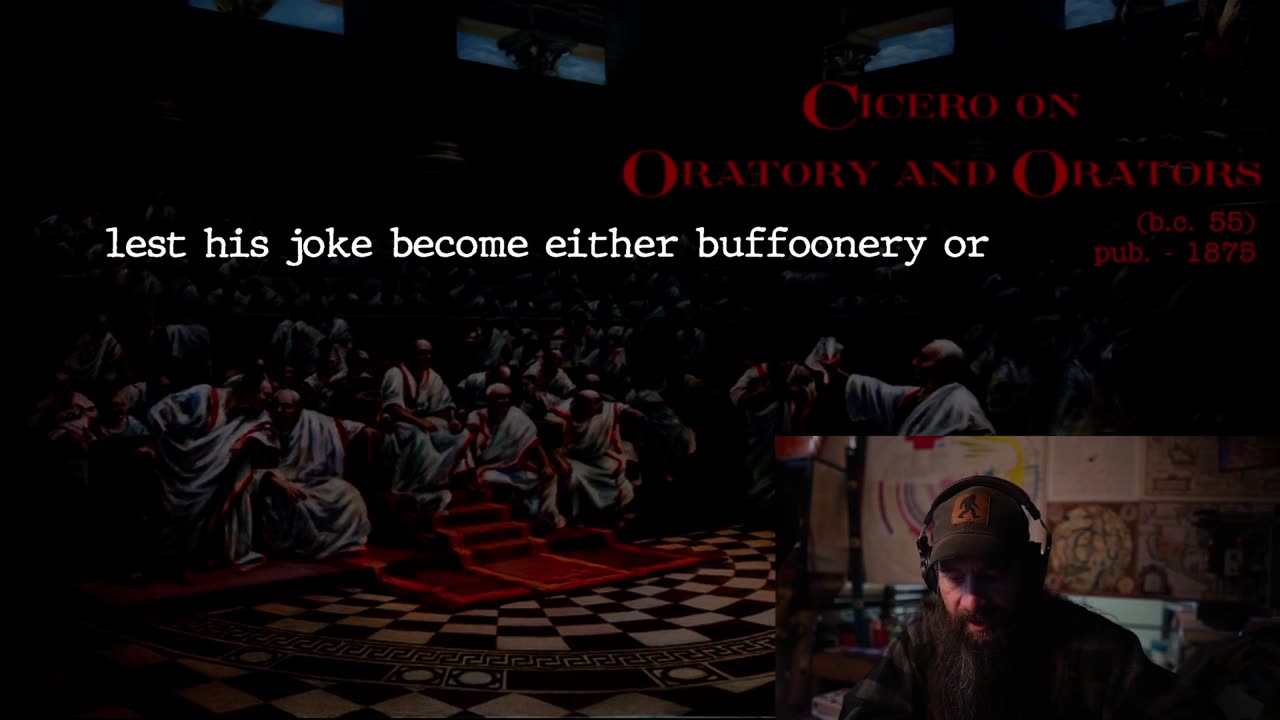Premium Only Content

Cicero on Oratory - B2 - LIX LX
Cicero on Oratory - B2 - LIX LX
Cicero discusses the principles and techniques of humor and oratory in this lecture. He emphasizes the importance of caution in jesting and outlines different types of humor, including ridicule based on character flaws and the use of mimicry. Cicero notes that effective jesting should maintain propriety while being entertaining, and he establishes guidelines for orators to distinguish themselves from mere buffoons by using wit purposefully and judiciously.
Key Points:
Caution in Jesting
Cicero stresses the necessity of caution when joking, suggesting that humor should avoid topics that could provoke strong negative reactions or extreme compassion. The best subjects for humor are character flaws that do not invoke sympathy or call for punishment.
Types of Humor
There are two primary types of humor: jokes derived from storytelling and jokes expressed through wordplay. Story-based humor can contain fictitious elements while remaining relatable, whereas verbal wit demands clarity and cleverness without descending into buffoonery.
Mimicry in Oratory
While mimicry can enhance humor, Cicero advises moderation. Overly exaggerated imitations can lead to indecency and distract from the message. The audience should perceive more by suggestion than what is explicitly shown.
Purposeful Jest
Joking serves a purpose beyond mere laughter; it should aid in conveying a point or achieving a goal. Effective orators use humor strategically while avoiding random or purposeless jokes that can undermine their authority.
Discerning Proper Timing
Cicero highlights the importance of knowing when to jest and stresses that orators should practice prudence and moderation in their humor. The effectiveness of humor is greatly influenced by timing and context.
-
 2:18:15
2:18:15
Side Scrollers Podcast
18 hours agoBlizzard BANS Player for Saying “n00b” + Cracker Barrel Ends PRIDE Funding + MORE | Side Scrollers
48.4K27 -
 19:54
19:54
GritsGG
14 hours agoMAX SR Win on Warzone! Ranked Tips for Loadout & Landing Spot!
6.91K -
 LIVE
LIVE
Lofi Girl
2 years agoSynthwave Radio 🌌 - beats to chill/game to
321 watching -
 44:41
44:41
Inverted World Live
13 hours agoPolitical Violence in Minnesota w/ AK Kamara
164K18 -
 6:29:40
6:29:40
SpartakusLIVE
13 hours ago#1 Massive MEAT-HEAD can't stop WINNING, can't stop FLEXING
84.7K -
 5:09:25
5:09:25
Drew Hernandez
14 hours agoGIDEON AI THREAT DETECTION SOFTWARE PUSH & NEW EPSTEIN EMAIL LEAK?
52.1K33 -
 2:03:51
2:03:51
TimcastIRL
10 hours agoTrans Minneapolis Shooter BLAMED Massacre On Mom & Gender Transition | Timcast IRL
193K359 -
 47:29
47:29
Man in America
16 hours agoIT DOESN'T ADD UP: The Trans Shooter's Story Is FULL of Holes
63.4K74 -
 3:59:36
3:59:36
StevieTLIVE
9 hours agoFriday Night Warzone HYPE
46.7K1 -
 3:47:10
3:47:10
SynthTrax & DJ Cheezus Livestreams
1 day agoFriday Night Synthwave 80s 90s Electronica and more DJ MIX Livestream Michael Jackson / AI Art Compilation Edition
54.6K2